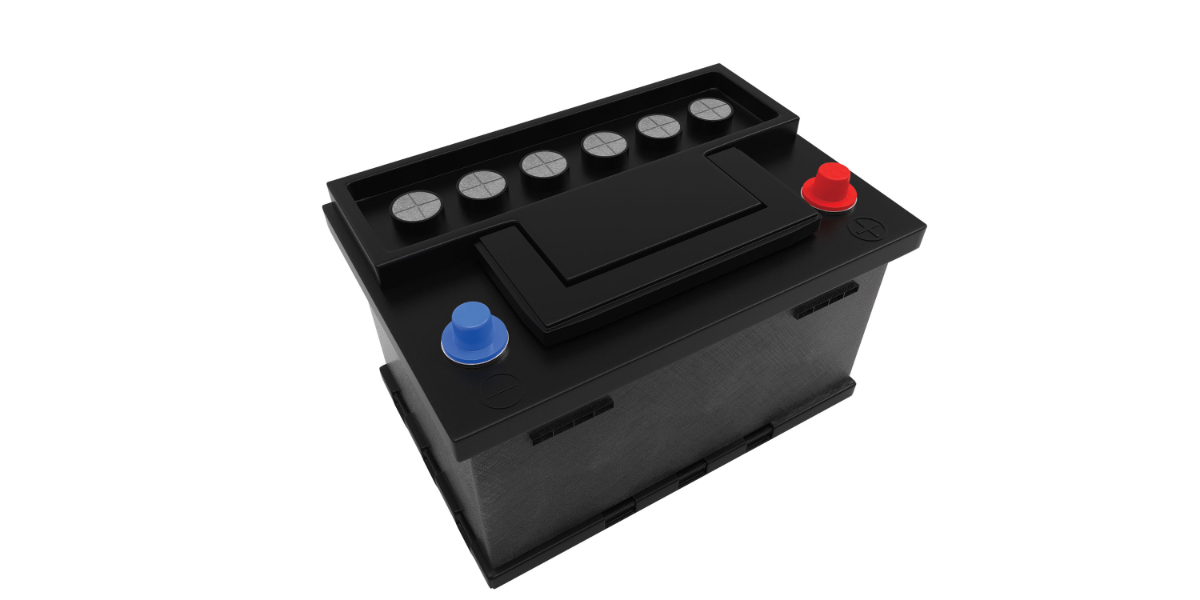RV Toilet Maintenance
Image Caption:
Whether while on the road or in camp, the smell of sewage in the motorhome can elicit panic. Where is it coming from and, perhaps more important, how do I get rid of it?
Most RV toilets are pretty simple affairs, but modern technology has resulted in an uptick in complexity to allow designers to make motorhome floorplans more intuitive and exciting.
Go back far enough in American history, and the most common way to “go” was in the outhouse. Sir Isaac Newton’s flush mechanism, also known as gravity, worked well in the outhouse and is also the preferred method in RVs. The fundamental difference is, in motorhomes, there’s a valve between the tank and the seat.
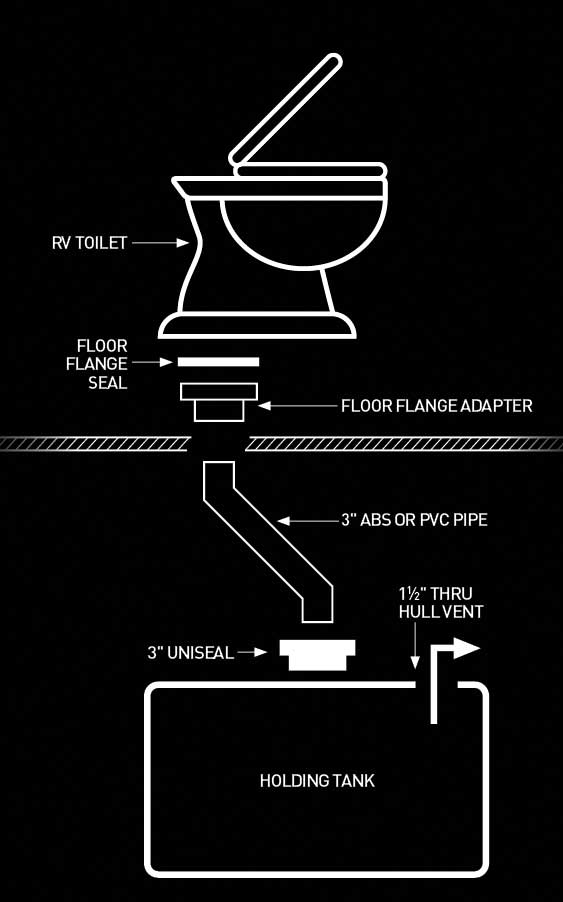
OK, there are some more differences, like running water to aid the flush, but the concept is similar. In a residential toilet, water flow pushes the contents into a pipe that goes to a septic system or sewer system, maintaining a water barrier between the seat and the termination to keep odors at bay. While an RV toilet may have a small amount of water in the bottom of the bowl, it is there more to aid in the breakdown of solids in the holding tank than to power the flush or to be a water barrier between the tank and the inside environment. That is done via a sealing mechanism.
RV Toilet Mechanisms
The majority of RV toilets work on a simple principle (we’ll address the more complex models in a bit). A hand, foot pedal or electric switch is used to add water to the toilet before use. With the former, water is added via a slight depression of the foot pedal or by opening the water valve lever. After the “go,” a full depression of the foot pedal — or activation of the hand flush —opens a valve at the bottom of the toilet, allowing gravity to pull the contents down into the holding tank. The toilet is then ready for the next contestant.
Despite its inherent simplicity, an improperly maintained RV toilet can fail to seal or worse and get stuck in a slightly open position that allows water to flow, slowly causing the black tank to fill then overflow into the motorhome. While this extreme example is rare, just having the toilet not seal properly, allowing odor to get through, is bad enough.
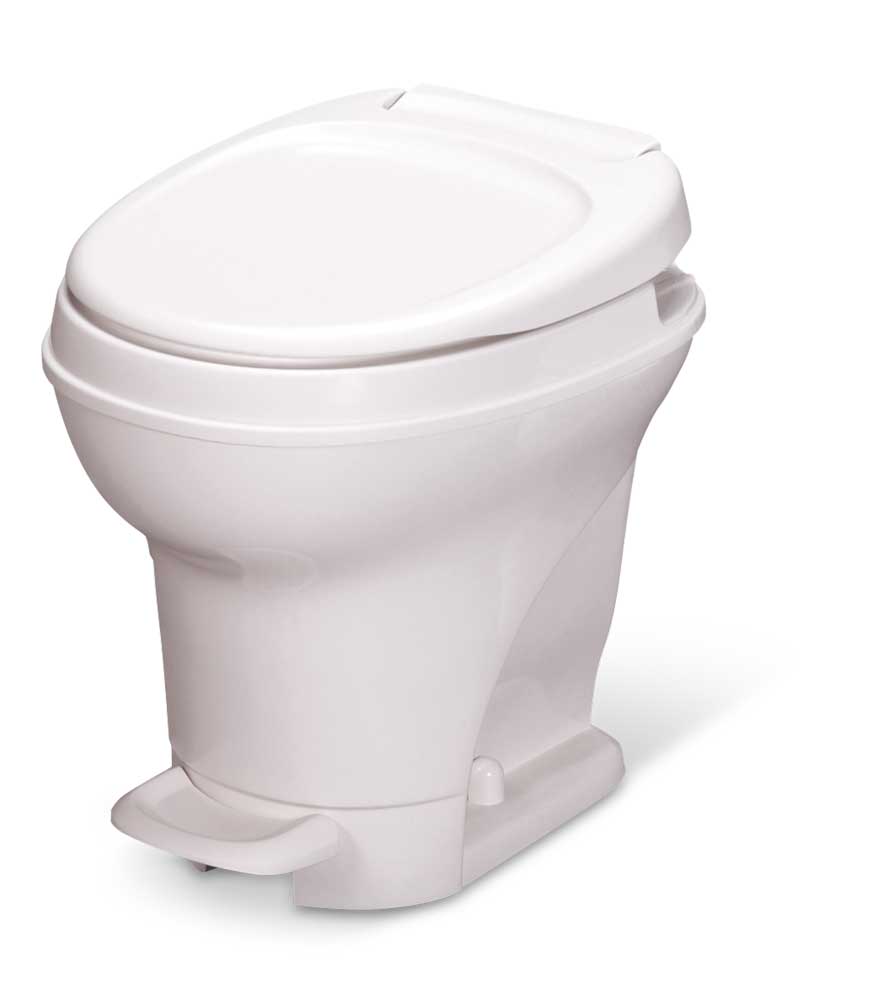
One of the most used toilets in the RV world, the Thetford Aqua Magic comes in both foot-pedal and hand-flush models, in both high-profile and low-profile models.
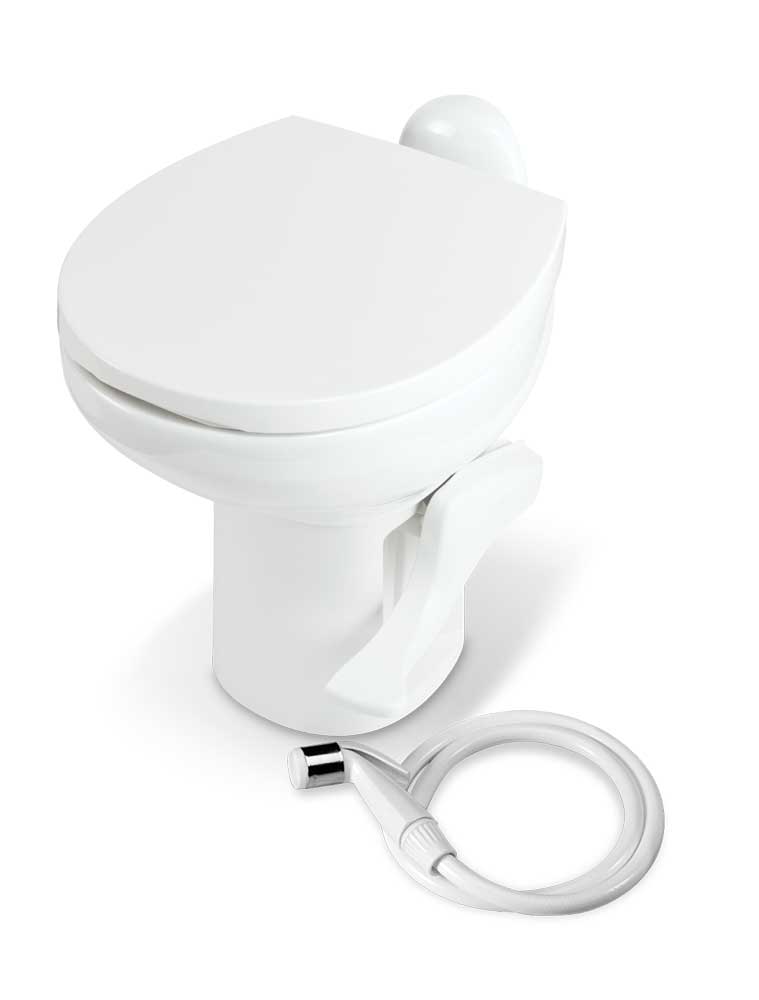
Also in many RVs, the Thetford Aqua Magic Style-II is a hybrid short-bowl porcelain toilet that sits upon a plastic valve tower.
How to Use an RV Toilet
Using the RV toilet properly is the best thing you can do to prevent problems. This means adding at least 1⁄3-½ bowl of water when solids are involved. This does two things. First, it allows the contents to flush more thoroughly and more quickly, reducing the risk of solids getting caught in the flush mechanism. Second, ample water, along with a good RV tank chemical, helps to control odor and breaks down paper and solids in the tank. This helps keep a cleaner tank over the long term. Also, be sure to depress the flush mechanism completely and quickly to open the discharge all the way.
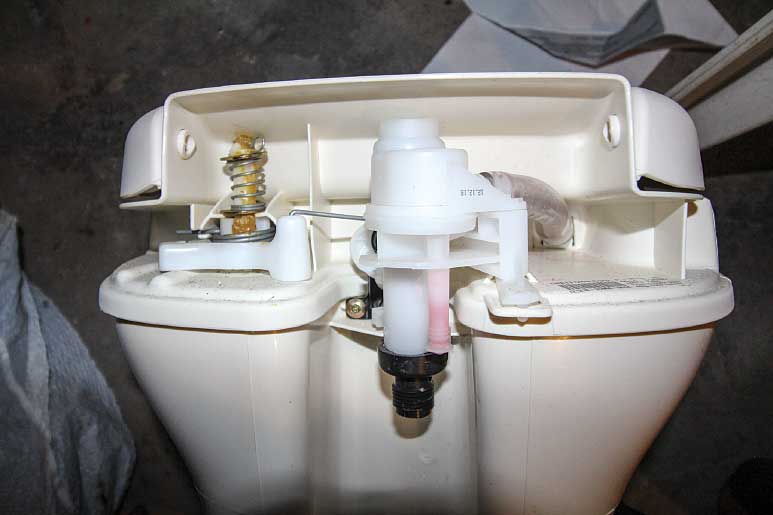
Hidden in the back of the hand-flush Aqua Magic is the check valve with freshwater connection and the mechanism that opens the knife-style flushing valve.
RV Toilet Seals
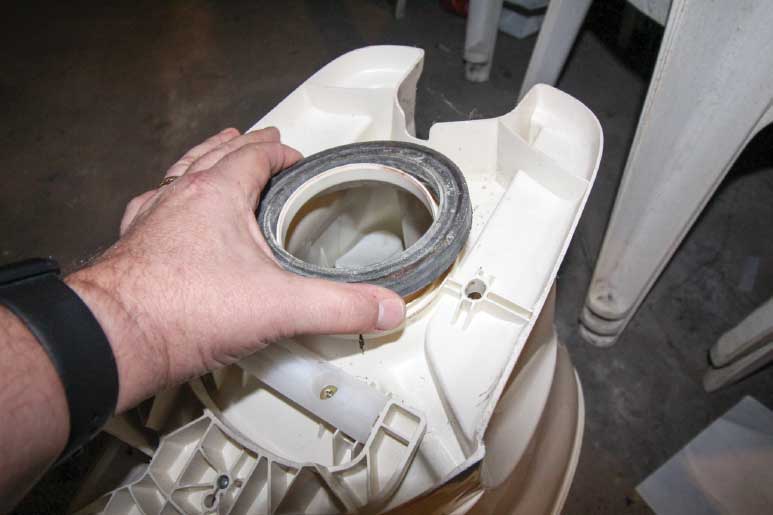
RVs use a foam rubber toilet flange seal instead of wax. Every time the toilet is removed, it is ecommended this seal be replaced to ensure there’s no leakage.
The flush seals are pretty tough material. However, they will wear with extended use, and sometimes lose their elasticity, causing leakage. Foreign debris, which is the easiest to fix, is also a common cause. A right-angled flat blade screwdriver passed around the inner edge of the seal will aid in fixing this issue, as will careful use of a soft toilet brush, like Thetford’s RV toilet brush. If this doesn’t correct the problem, disassembly and cleaning with the replacement of the seals is recommended.
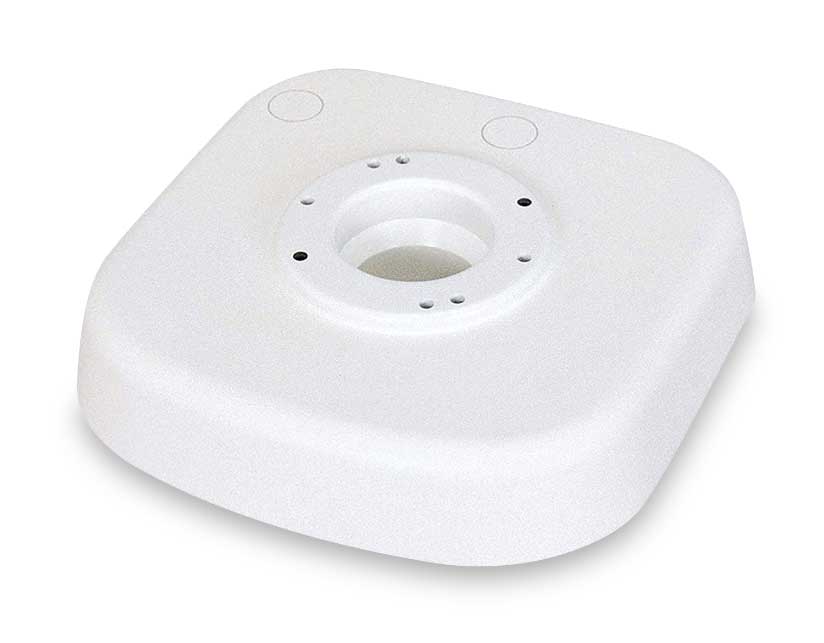
Thetford’s Aqua Magic and certain other models of RV toilets can benefit from a riser if the seat is too low for comfort. The riser elevates the seat 2½ inches and is permanently mounted between the toilet flange and the toilet.
Cleaning an RV Toilet
Naturally, there are dedicated products for adequately cleaning an RV toilet. It’s essential that especially caustic cleaners, like many commercially available toilet cleaners, are not used in an RV toilet. The valve mechanisms are made of plastic, along with various rubber or other synthetic seals and parts that may not react well with those chemicals. Stiff bristle toilet brushes are similarly not recommended.
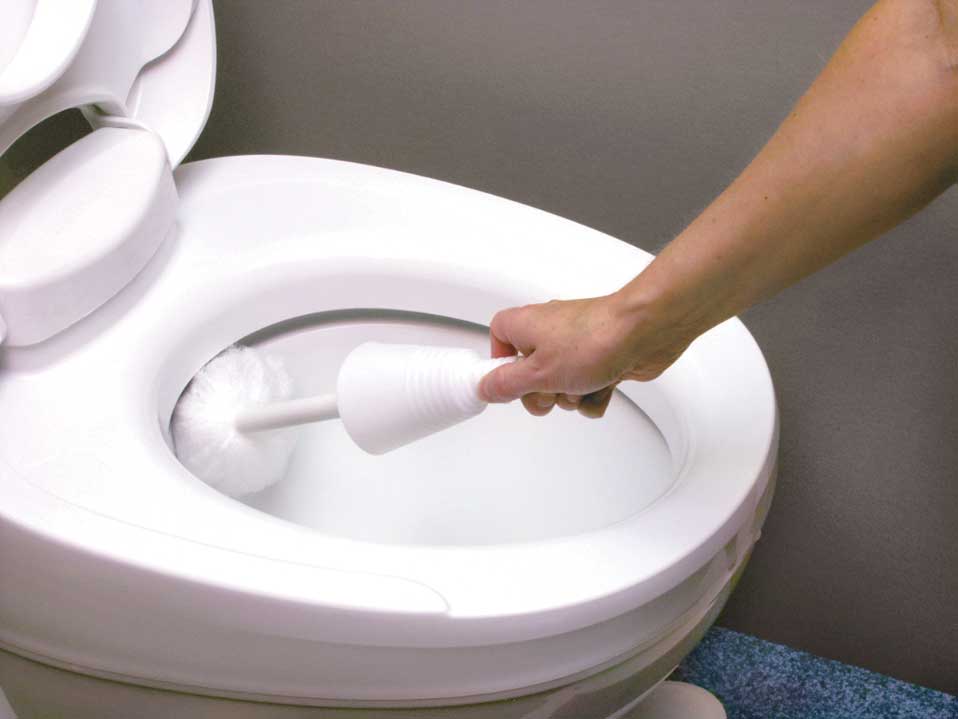
Thetford’s Soft Swab or other soft bristle brush can be used for toilet cleaning.
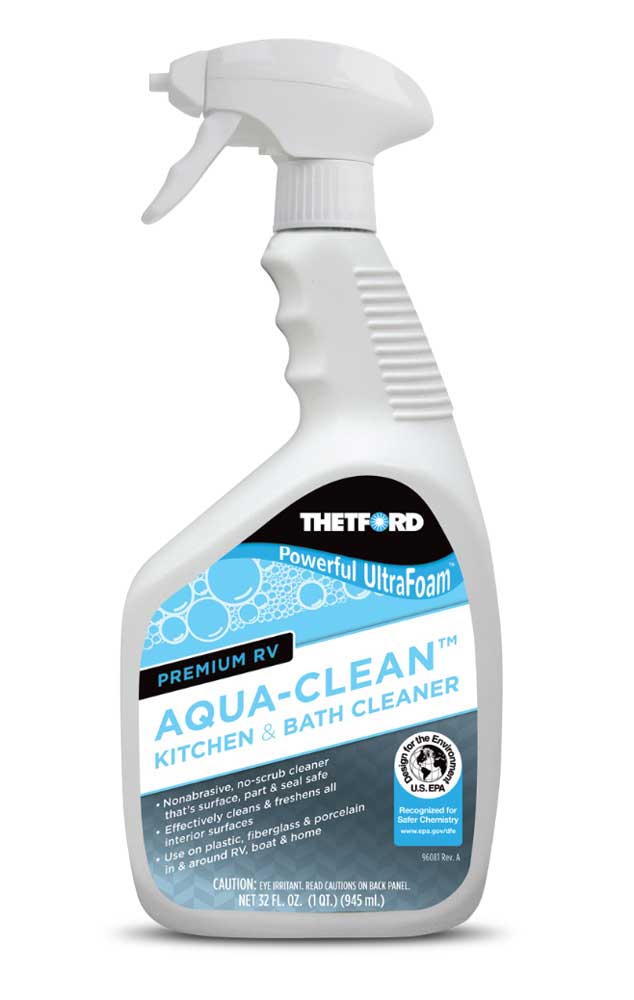
Use of a specialized cleaner designed for motorhome bathrooms (or kitchens) is imperative so as not to damage any of the sensitive components.
RV Toilet Leaks
Leaks can also result from a loose flush mechanism or, in the case of some porcelain toilets, a loose attachment band between the bowl and pedestal. Improper winterizing can lead to a cracked water valve, check valve, pipe connection, or toilet body, so winterizing with RV antifreeze is always recommended.
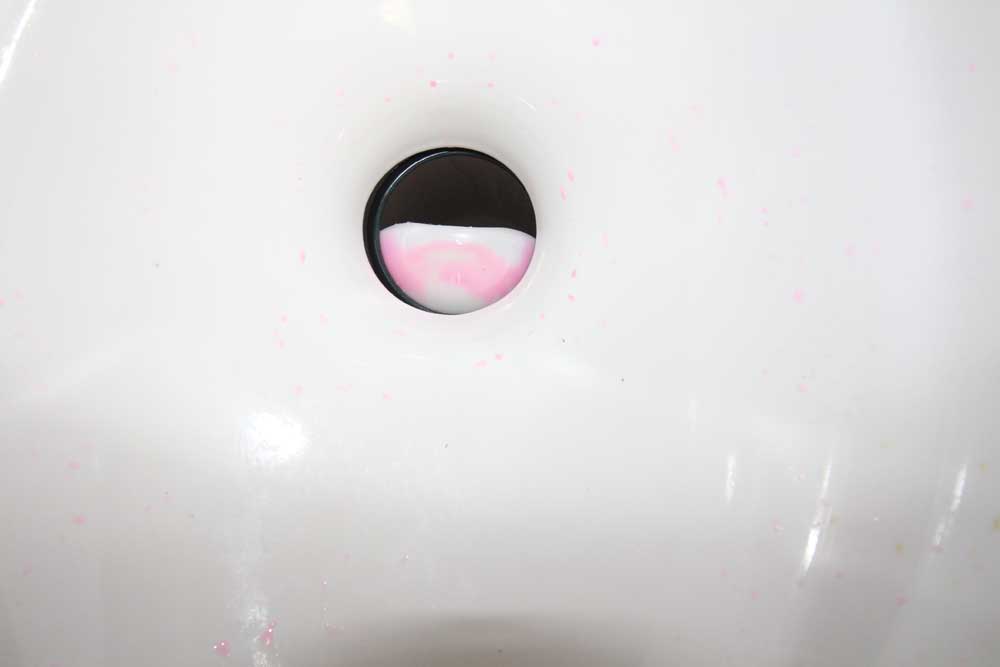
This winterized porcelain toilet has a plastic ball-type valve and rubber seals. Use a right-angled screwdriver to try and clean out any debris that might be stuck between the ball and seal — carefully — taking extra care so as not to gouge the ball. If the toilet still doesn’t hold water, a seal replacement might be in order.
A sticky valve must be fixed as soon as possible. Besides the debris already mentioned, sometimes the seals become dried out and sticky, or the mechanism gets rusty and sticks. A quality valve lubricant like Dow Corning 111 will work well to lube the gaskets and slide valve or ball. Again, if this doesn’t do the trick, teardown and cleaning may be required.
Macerator toilets like the Dometic MasterFlush and Thetford Tecma models require a little more maintenance because of their moving parts and systems.
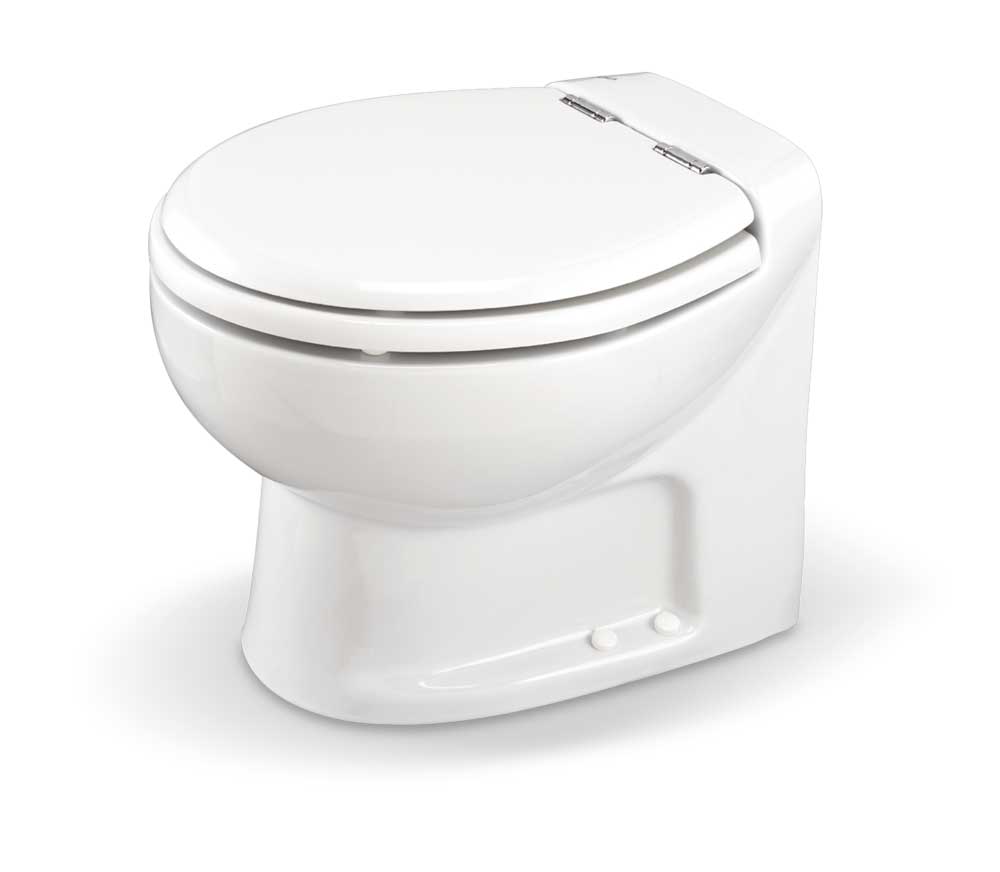
Macerator and vacu-flush toilets are commonly used in high-end RV and marine applications, and are popular in bath-and-a-half floorplans where the black tank is installed remotely from the toilets. These often have a push-button electronic flush and fill panels.
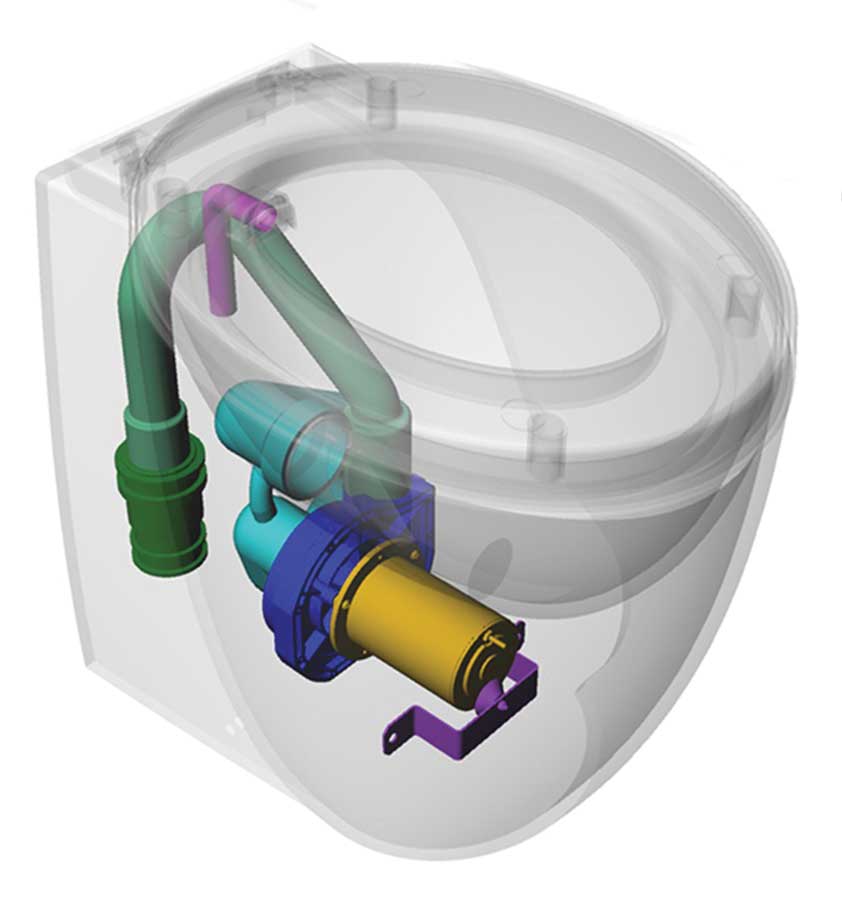
Macerator toilets, like this Thetford Tecma, use a macerator pump to grind and pump effluent through a hose smaller than the standard 3-inch pipe. Used in marine applications for years, the RV industry has discovered the flexibility of these systems.
RV Toilet Paper
As in any RV toilet, it is imperative that nothing other than RV/marine toilet paper is flushed down a macerator toilet. It needs to be a paper that is rapid-dissolving. Any other items can cause a jam or worse in the macerator pump, requiring an unpleasant teardown and cleaning to repair.
Occasional flush-cleaning of the macerator is recommended. While ordinary toilet chemical can be used, a specialized cleaner like Thetford’s Aqua-Clean is a better choice. Never pour bleach down the toilet, and don’t use any harsh chemicals, including household toilet cleaners, as they can damage sensitive parts and hoses. There are specialized cleaners on the market that are safe.
Winterizing a macerator or vacu-flush toilet requires a little more care than a gravity flush model because there are pumps and valves in the system that need to be protected. Running RV antifreeze through the complete system is essential.
By following a few steps, and being careful how you use your sanitation system, you can be assured your throne will be ready when needed.
For More Information
Dometic Corp. | 800-366-3842
Thetford Corp. | 800-543-1219




